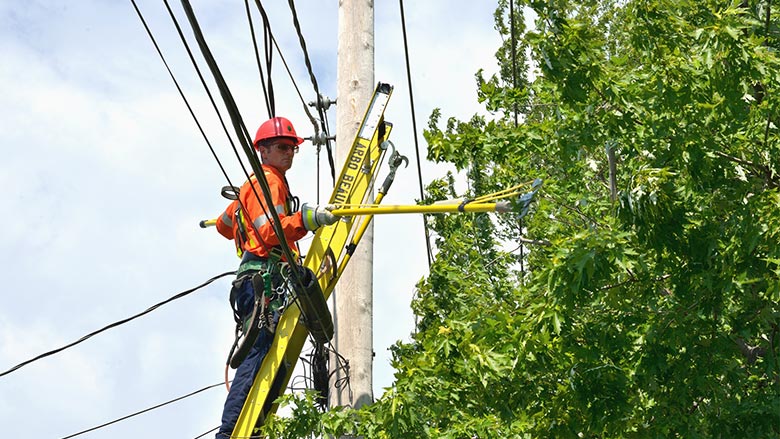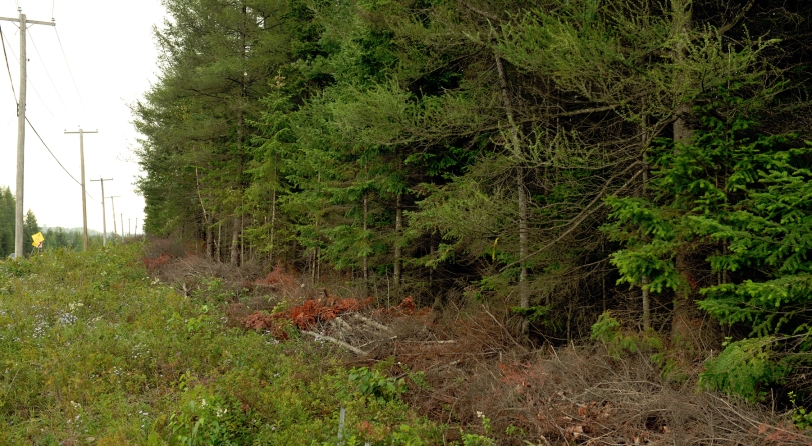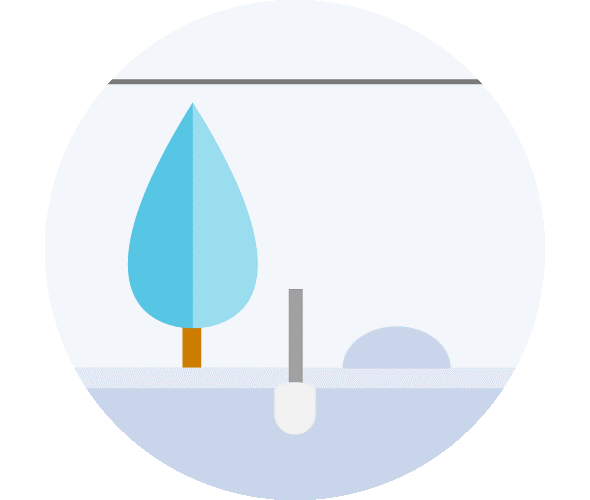Medium‑voltage lines don’t have an insulating sheath. Instead, the air around them provides insulation. That is why vegetation close to the lines can cause short circuits, even without any direct contact. These short circuits could endanger people by starting a fire or, in some cases, causing an electric shock. That is why vegetation control operations are a priority at Hydro‑Québec.
Video: Vegetation Management [in French only]
François Richard, a forest engineer at Hydro‑Québec, explains why it is important to maintain a clearance between lines and vegetation close to the power grid.
Control methods used
Hydro‑Québec carries out vegetation control operations on more than 104,000 km of power lines. It’s a tough and long job—one that must be carried out branch by branch, tree by tree. To do this work, Hydro‑Québec opts for environmentally friendly control methods such as pruning, selective clearing and, in the case of dangerous trees, felling.
Pruning
Pruning involves cutting branches to ensure safe clearance around medium-voltage lines. It is mainly carried out in built‑up environments like cities, suburbs and villages, and constitutes the bulk of Hydro‑Québec’s vegetation control work. Pruning helps to preserve habitats and maintain biodiversity–for example, in urban or suburban woodlands. Pruning is a difficult, dangerous and costly operation that must be carefully planned.
Check for scheduled vegetation control activities in your area

Selective clearing
This method, reserved for forested areas, is applied every 5 to 10 years. It involves cutting all species of taller trees down to ground level while maintaining compatible plants which, as they grow, will not encroach on power lines. This preserves a diversified plant cover that provides habitat for various animal species.
The owner’s permission is required before the clearing can start. Should the owner refuse, Hydro‑Québec will prune the trees instead.

Felling dangerous trees
Trees that are fragile or weakened are likely to fall and come into contact with distribution lines. Arborists are in charge of identifying trees that pose a risk so that felling operations can be planned.
Whenever a tree poses a risk to the power system, Hydro‑Québec will ask the owner for permission to cut it down. A refusal to grant permission could have negative consequences—for example, if the tree or its branches fall onto power lines and cause an outage, other customers could suffer damage. In addition, it typically costs thousands of dollars to dispatch a line crew to restore electricity service, and Hydro‑Québec could claim the costs from the owner. That is why we advise owners to check with their insurer to see if they’re covered for civil liability in such cases.


Planting the right tree in the right place
Through simple actions, like choosing the right tree or shrub, you can make a concrete contribution towards the safety and reliability of the power system. Choose tree or shrub species that, as they grow, won’t encroach on medium‑voltage power lines.